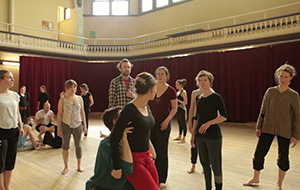 With creating and teaching choreography to dancers, there is an inevitable point when the choreography has sunk in and it must be cleaned or tidied up so it is consistent across each dancer. The piece may rely on counts, the lyrics of the music it is danced to or even simply breath, so if this has not already been ingrained in the dancers this must be the first thing to be specified and pinned down. This will hold the piece together so it is imperative to solidify this in the dancers’ brains, creating a framework for the rest of the cleaning.
With creating and teaching choreography to dancers, there is an inevitable point when the choreography has sunk in and it must be cleaned or tidied up so it is consistent across each dancer. The piece may rely on counts, the lyrics of the music it is danced to or even simply breath, so if this has not already been ingrained in the dancers this must be the first thing to be specified and pinned down. This will hold the piece together so it is imperative to solidify this in the dancers’ brains, creating a framework for the rest of the cleaning.
In order to clean sufficiently, break the choreography down into short sections, as it may be that the dancers do not perform in unison and the choreography therefore requires the coordination of different elements. It may be best to focus on each element each time the piece is run in order to solidify each one, fine-tuning each one with less distraction. Making notes throughout each run will help to give dancers their notes afterwards, as it can be distracting to call our corrections as they are dancing.
In making corrections, there are usually a combination of individual notes and quick fixes, in addition to issues for the bigger picture of the piece which need more work. Some may be problematic, such as sorting traffic across the stage during busy sections of the piece. These notes can be time-consuming but completely necessary to give the dancers confidence when performing the piece.
Whilst the technical elements of the choreography are intrinsic, artistic elements are the icing on the cake. The dancers’ focus is a huge must to pin down, and can be achieved by talking through the piece and the intention behind it at different stages throughout. Encourage the dancers to talk too, about what the piece means to them and what they feel they portray, allowing a more personal connection between the dancers and the piece.
Category: News
Big Dance highlights for 2016
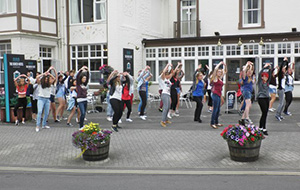 Big Dance 2016 saw 42,000 people take part in worldwide performance for the love of the art form. Not only were there Big Dance performances all over the UK, but also across the world in 44 countries, in locations such as Beirut, Tokyo, Texas and Hong Kong. Esteemed choreographer Akram Khan devised both the choreography and Big Dance online resources in order to involve dancers of all ages, from all types of communities and using many styles of dance.
Big Dance 2016 saw 42,000 people take part in worldwide performance for the love of the art form. Not only were there Big Dance performances all over the UK, but also across the world in 44 countries, in locations such as Beirut, Tokyo, Texas and Hong Kong. Esteemed choreographer Akram Khan devised both the choreography and Big Dance online resources in order to involve dancers of all ages, from all types of communities and using many styles of dance.
The Big Dance Pledge 2016 began in November 2015 at the University of Roehampton, London, where Khan worked with 60 students and the Big Dance creative team to create a piece of choreography to hand over to the rest of the world. By the end of the Worldwide Performance Day, 20 May 2016, over 42,000 people around the world had learned or used the choreography to create their own spectacular performances.
Wales saw the Big Dance Pledge used to improve the Welsh language skills of young people growing up bilingually, using words and sounds associated with the choreography. In Hong Kong, the CCDC Dance Centre, Hong Kong Academy for Performing Arts (HKAPA) and HKAPA Dance Alumni Association invited 100 participants to dance on site at the West Kowloon Cultural District, the first of its kind. In San Sebastiàn, Spain, the Olatu Talka Festival marked its opening – and this year’s European Capital of Culture programme – with British Council Spain supporting artists to learn and teach the Big Dance choreography for an open air performance.
Big Dance is by no means over. Next up is Big Dance Trafalgar Square on 2 July 2016, London’s final Big Dance, for which registration re-opened by popular demand. The Big Dance Bus Tour – until 10 September across London – will see a double-decker routemaster pop up in the most unusual places, creating ‘guerrilla-style’ dance experiences.
Northern Ballet’s Choreographic Laboratory
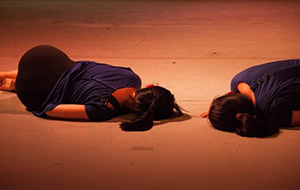 Northern Ballet has launched its second annual Choreographic Laboratory which brings together five emerging choreographers for a three-week intensive to research and develop ideas for new narrative dance, with Northern Ballet’s professional dancers. The Choreographic Laboratory culminates in Tell Tale Steps 2: Narrative in Ballet, a sharing at the Stanley & Audrey Burton Theatre in Leeds on 16 June 2016.
Northern Ballet has launched its second annual Choreographic Laboratory which brings together five emerging choreographers for a three-week intensive to research and develop ideas for new narrative dance, with Northern Ballet’s professional dancers. The Choreographic Laboratory culminates in Tell Tale Steps 2: Narrative in Ballet, a sharing at the Stanley & Audrey Burton Theatre in Leeds on 16 June 2016.
The Choreographic Laboratory began in 2015 by Northern Ballet’s Artistic Director David Nixon OBE. It is run in partnership with the Royal Ballet and curated by director and producer Jane Hackett, offering emerging choreographers the opportunity to work with Northern Ballet’s dancers to explore the creation of new narrative dance work. The scheme commits itself to nurturing choreographers and to developing talent. The experience therefore appears invaluable, with its wide ranging mentorship and tools on offer which are thought-provoking and challenging.
Carlos Pons Guerra (independent choreographer), Charlotte Edmonds (Royal Ballet Young Choreographer), Lucia Solari (First Soloist at Northern Ballet), Morgann Runacre-Temple (independent choreographer and choreographer in residence at Ballet Ireland) and Tobias Batley (Premier Dancer at Northern Ballet) have spent three weeks at Northern Ballet to explore narrative dance. The intensive also includes a programme of talks and mentorship from Sharon Watson, Artistic Director of Phoenix Dance Theatre and dance writer Luke Jennings.
The culmination of the Choreographic Laboratory is Tell Tale Steps 2: Narrative in Ballet, a sharing of the process of experimentation and research during the choreographers’ three week residency. The sharing will demonstrate their exploration of narrative dance, created characters and a sense of place and drama. The programme also includes a panel of leading arts professionals discussing the creation of narrative dance.
The Young Choreographer’s Festival
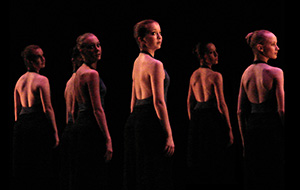 The Young Choreographer’s Festival in New York City is celebrating its seventh year of presenting some of the most promising up-and-coming young artists. It will produce the work of 13 18-25 year olds selected by a judging panel, alongside seven Guest Artists at Symphony Space. The 2016 performance is taking place on Saturday 18 June, including the genres of contemporary, contemporary Indian, modern, jazz and street jazz.
The Young Choreographer’s Festival in New York City is celebrating its seventh year of presenting some of the most promising up-and-coming young artists. It will produce the work of 13 18-25 year olds selected by a judging panel, alongside seven Guest Artists at Symphony Space. The 2016 performance is taking place on Saturday 18 June, including the genres of contemporary, contemporary Indian, modern, jazz and street jazz.
The Young Choreographers will be joined by Guest Artists including Derek Mitchell, Jenn Freeman, Open Call’s Innovate Award Winner – Connecticut Dance Conservatory, Shelly Hutchinson Collective, SynthesisDANCE/Tracie Stanfield and White Wave/Young Soon Kim Dance Company. For the past four years, the festival has offered a discussion panel open to all young choreographers selected from 2010 onwards. 2016 is no different, and the young choreographer will have the opportunity to hear from and question members of the dance community, hosted by a YCF Advisory Board Member.
Past panelists have included Maurice Brandon Curry (artistic director of Egelvsky Ballet), Darrell Grande Moultrie (with credits from Dance Theatre of Harlem, Beyoncé and Atlanta Ballet), Camille A. Brown (leader of Camille A. Brown and Dancers), Sidra Bell (head of Sidra Bell Dance New York), Laura Diffenderfer (an associate programmer at The Joyce Theater), Ashani Mfuko (the host of Inside NYC Dance television show), Yarden Ronen (executive director of Peridance Capezio Center) and Pascal Rekoert (a Lincoln Center scholar), so this year’s artists are in for a treat.
Each Young Choreographers will be provided with a mentor also. The 2016 mentors include Michelle Barber (Broadway Dance Center faculty member), Cheryl Copeland (teacher at Millenium Dance Complex), So You Think You Can Dance choreographer Shelly Hutchinson, Calen Kurka (producer of The Showcase Series), Kat Wildish (a former dancer with American Ballet Theatre and New York City Ballet), Lane Napper (a choreographer for Nickelodeon and Disney Channel) and Matthew Shaffer (author of “So You Want to be a Dancer?”).
Audition fees cap
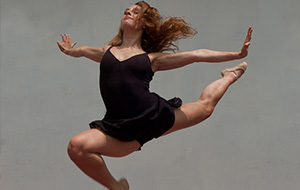 Drama and dance schools across the UK may be forced to rethink their audition fees, if a recent call by Equity to do so is anything to go by. The union has stated that audition fees should be capped in order to widen access to schools and improve accessibility to training. It is a notion that has been a hot topic for many organisations and industry professionals, as for many this training is only available to those who can afford it.
Drama and dance schools across the UK may be forced to rethink their audition fees, if a recent call by Equity to do so is anything to go by. The union has stated that audition fees should be capped in order to widen access to schools and improve accessibility to training. It is a notion that has been a hot topic for many organisations and industry professionals, as for many this training is only available to those who can afford it.
A motion passed at Equity’s Annual Representative Conference claimed that the acting profession should be “more representative of the population as a whole”, and the organisation has agreed to carry out an audit of the charges requested for auditions by drama schools across the UK. These fees can be as much as £85, before travel and possible accommodation costs in order to attend the audition. The union is aiming to campaign to encourage drama schools to adhere to a UK-wide cap on audition fees.
The cap would go a long way in improving the diversity of drama schools’ intake, as well as avoiding the fact that currently, it is usually only the well-off who can afford to choose which schools they want to attend for training. For some institutions, over 3,000 audition per year; many state that the audition fee covers the administrative and operations of the audition process, as well as paying the audition panel, however some students have short contact time and little to no feedback on their audition.
For some schools, auditions last all day; some have fee waiver schemes and support some students with travel bursaries also. Others try to encourage applications from talented students from lower income backgrounds, including launching a scheme to waive the fees for target schools, welcoming the transparency this move will bring.
Gaining stage presence
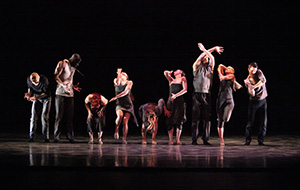 Stage presence is something that can come quite naturally to performers, however sometimes a little encouragement and pointers are required to propel a dancer in the correct direction. Whilst exceptional technique can be awe-inspiring, it is the entire package with emotion and commitment that makes a dancer unique.
Stage presence is something that can come quite naturally to performers, however sometimes a little encouragement and pointers are required to propel a dancer in the correct direction. Whilst exceptional technique can be awe-inspiring, it is the entire package with emotion and commitment that makes a dancer unique.
For a teacher, stage presence can be encouraged from an early age; as dancers grow older and progress, they may wish to compete against other dancers so must stand out. A flashy routine, however, will not always impress if there is no intention behind the movement or connection to the dance. Stage presence and a performance quality can seem elusive, but practice can aid this no end.
It is important for a dancer to commit to the story they are trying to tell, as well as connect to the music and express what they are feeling through movement. Energy, presentation and technique ultimately form a unique package, even for dancers who are inexperienced or reluctant to push themselves in a way which feels uncomfortable. Performing can be the most exciting experience and can conjure the most exhilarating emotions, and teachers can do much to nurture this.
As a teacher, encouraging students to appreciate and talk about successful performances can ensure they feel supported to express themselves. When students feel comfortable, their confidence grows and they will be more willing to try new things and push through shyness. Discussions and explorations throughout classes can help students to analyse and critique in a constructive way, in order to own and experiment with their performances, rather than choreographing empty presentation and expression.
There can be many ways to inspire students to push themselves further: by watching peers but additionally through their experiences of older and successful dancers, encouraging them to identify their performance qualities. By continually encouraging stage presence, can teachers help dancers experience a more seamless transition from practice to performance, even using classes as performance practice. Making this part of a dancers training will mean showmanship will evolve alongside technique.
Keep Dancing
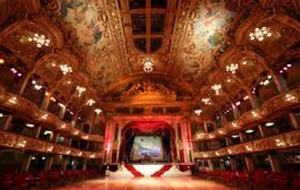 From the creators of “Spirit of the Dance”, Keep Dancing – a brand new Ballroom and Latin dance show – is set to wow audiences, featuring special guests from Strictly Come Dancing and celebrating the ever-popular world of Ballroom and Latin dance. The major tour of the UK will begin August 2016, featuring stars from Strictly including Jay McGuinness, Lisa Riley and Louis Smith. Strictly favourite Robin Windsor, and other professional dancers from Strictly Come Dancing, will dance alongside world-champion Ballroom and Latin dancers.
From the creators of “Spirit of the Dance”, Keep Dancing – a brand new Ballroom and Latin dance show – is set to wow audiences, featuring special guests from Strictly Come Dancing and celebrating the ever-popular world of Ballroom and Latin dance. The major tour of the UK will begin August 2016, featuring stars from Strictly including Jay McGuinness, Lisa Riley and Louis Smith. Strictly favourite Robin Windsor, and other professional dancers from Strictly Come Dancing, will dance alongside world-champion Ballroom and Latin dancers.
The tour will feature some of the most popular styles of Ballroom and Latin in this fast-paced, high intensity production. With dazzling costumes and breathtaking choreography, Keep Dancing includes both champion performers and stunning dance routines for non-stop entertainment.
Confirmed guest stars include singer and dancer Jay McGuinness, who be performing with his winning professional partner Aliona. Before becoming the 2015 Strictly Champion, Jay enjoyed success as a member of the band The Wanted. Louis Smith was the first British gymnast to win an Olympic medal for over 100 years at the Beijing Olympics in 2008, followed by success at the London 2012 Olympics. He was the celebrity winner of the 2012 Strictly. Lisa Riley and Robin Windsor were one of the most popular couples in the 2012 series of Strictly Come Dancing. Lisa is best known for her former long-running role in ITV’s Emmerdale, and the co-host of You’ve Been Framed.
Keep Dancing will tour to Bromley Churchill Theatre, Milton Keynes Theatre, Wimbledon New Theatre, Cardiff New Theatre, York Opera House, Manchester Palace Theatre, Woking New Theatre, Glasgow Theatre Royal, Liverpool Empire, Eastbourne Congress, Edinburgh Playhouse and Birmingham Alexandra, with 2017 tour dates to be announced soon.
Can acrobatics ever be dance?
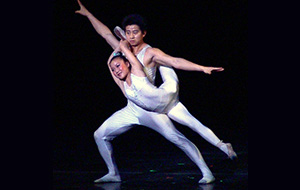 With gymnastics predominantly classed as a sport and dance an art, it seems the boundaries of the two are blurring as dancers aspire to more ways to stand out from the group. Of course gymnastics has always had a connection to dance – at the Olympic Games the gymnasts must incorporate an element of ‘dance’ to their floor routines – especially as dance is evolving to incorporate more content. Some may argue this is at the expense of technique and artistry.
With gymnastics predominantly classed as a sport and dance an art, it seems the boundaries of the two are blurring as dancers aspire to more ways to stand out from the group. Of course gymnastics has always had a connection to dance – at the Olympic Games the gymnasts must incorporate an element of ‘dance’ to their floor routines – especially as dance is evolving to incorporate more content. Some may argue this is at the expense of technique and artistry.
The penchée that goes past 180 degrees and the multiple ‘ice skater’ pirouettes with the foot at the ankle go some way in demonstrating the need by some dancers to impress and extend beyond the realm of dance. It goes without saying that a dancer needs a certain degree of suppleness in order to perform to a full capacity, however – especially in the competition circuit – dancers are encouraged to fill lyrical variations with oversplit legs and flips. For those adjudicating, this is not always desirable and has moved far from where dance is thought to be.
Pushing the boundaries of dance and choreography is not discouraged, in fact it is celebrated in choreographers, however the incorporation of acrobatics in dances can even be dangerous. YouTube can be a culprit, with young dancers privy to extreme dance, then inspired to overstretch and push themselves, believing this is the key to success. Injuries can occur that are not usually associated with dance, with young dancers attempting difficult gymnastic poses and extreme forms of stretching, risking immediate and long term physical harm. This is in addition to the fact it is harder to create real choreography than to insert a cartwheel!
Adding to the competition culture is the fact many young dancers see them as the ultimate goal; many competitions provide useful experience and feedback but dancing is not just about winning. As an extension, the gymnastic and acrobatic moves practised have little to do with the professional dance world – very few companies in today’s ballet or contemporary dance companies would require this. Companies would be more interested if the dancer can blend into their existing group and not miss basic elements that are foundations in the professional dance industry.
Australia Council funding news
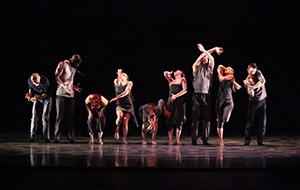 The month of May saw disappointing funding news for the arts in Australia, with as many as 63 arts companies and organisations informed that they had lost their Australia Council funding. Among those affected, organisations that have solid roots with years to their names were too disregarded; for many the loss of Australia Council funding is significant as it is core organisational funding that is relied on so heavily. Whilst organisations may still apply for project funding, that from the Council does provide the stability and security they require to plan for the future and indeed survive.
The month of May saw disappointing funding news for the arts in Australia, with as many as 63 arts companies and organisations informed that they had lost their Australia Council funding. Among those affected, organisations that have solid roots with years to their names were too disregarded; for many the loss of Australia Council funding is significant as it is core organisational funding that is relied on so heavily. Whilst organisations may still apply for project funding, that from the Council does provide the stability and security they require to plan for the future and indeed survive.
Organisations such as KAGE, Force Majeure and Balletlab were among those that lost funding, dance theatre companies with successful histories. KAGE, for example, is a small company nearly 20 years old, having survived for 16 years on short-term and project grants. 2012 saw the organisation receive its first AC Key Organisations grant over four years, yet 2016 has seen its future falter in uncertainty. Much of KAGE’s artistic programme is devoted to bringing dance into the community, rather than solely producing dance for the stage. The focus is just as much on teaching, exchange and making dance accessible as it is on performing.
Additionally, The Australian Dance Council (Ausdance Inc (Ausdance National) has been notified by the Australia Council that it will not receive operational funding beyond the end of December this year, another blow to the arts community down under. Ausdance National supports the Australian Dance Awards, the National Dance Forum and safe dance research, among many other activities, and is a keystone for dance in Australia.
Last year, Australia Council’s funding was reduced by $105million by the former arts minister, which meant Australia’s small-to-medium arts companies were aware that cuts were imminent, despite the fact a third of the lost funding was then restored by the new minister. 43 new organisations have received multi-year grants for the first time, however many may contest the funding of these at the expense of established companies, regardless of how important shift and evolution is for the arts.
English National Ballet’s Emerging Dancer 2016 winner
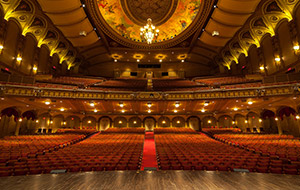 English National Ballet’s winner of both the 2016 Emerging Dancer Award and People’s Choice Award was Cesar Corrales, competing in May against five other company hopefuls. Now in its seventh year, Emerging Dancer allows English National Ballet to recognise and nurture talent, and encourage excellence in the company, with young and emerging dancers nominated to take part. For 2016 the other finalists were Isabelle Brouwers, Jeanette Kakareka, Rina Kanehara, Daniele Silingardi and Erik Woolhouse.
English National Ballet’s winner of both the 2016 Emerging Dancer Award and People’s Choice Award was Cesar Corrales, competing in May against five other company hopefuls. Now in its seventh year, Emerging Dancer allows English National Ballet to recognise and nurture talent, and encourage excellence in the company, with young and emerging dancers nominated to take part. For 2016 the other finalists were Isabelle Brouwers, Jeanette Kakareka, Rina Kanehara, Daniele Silingardi and Erik Woolhouse.
Corrales joined the Company in 2014 and was promoted to Junior Soloist last year, following in the footsteps of his parents who are also professional dancers. For the competition itself Corrales performed Contrabajo para hombre solo by Julio Lopez, as well as a pas de deux from Diana and Acteon with fellow finalist Rina Kanehara. The pair were well matched and gave strong performances, with Corrales scooping both the Emerging Dancer Award and People’s Choice Award at the London Palladium.
Announced live on stage at the Palladium on 17 May, and for the first time live streamed to audiences across the world, Corrales was selected as this year’s winner by a judging panel made up of leading figures in ballet and dance; Tamara Rojo, Sir Matthew Bourne OBE, Viviana Durante, Thomas Edur CBE, Russell Maliphant, Oxana Panchenko, and Morgann Runacre-Temple. He was chosen as the winner of the People’s Choice Award by members of the public, who voted throughout the 2015/2016 season.
The evening gives the company and its audiences the opportunity to celebrate the young dancers of English National Ballet – both onstage, and live streamed online. Having this platform allows both the artistic team and the dancers to continue their commitment to nurture the stars of the future, and develop them artistically. The evening also saw Jennie Harrington win the new Corps de Ballet Award, presented to an exceptional Artist of the Company who has gone above and beyond the call of duty over the last season.
